Learning Ladybirds (FS2)

Learning Ladybird Class Teacher: Miss Crook
Learning Ladybird Teaching Assistants: Mrs Hartshorn (shared with Busy Bees)
Learning Ladybirds will have PE on a Monday morning with Miss Keywood. Please check our Facebook page for any changes to PE day. Your child will need a PE kit every week. This includes a gold t-shirt and black shorts or leggings.
Please send your child to school with the following items:
Clearly labelled water bottle
Book bag with their planner inside it
Spare clothing
Please make sure all of your children's clothing is labelled with their name.
Parents reading morning will be on the last Friday of every month 8:30-8:50am - please enter through the cloakroom door.
Key Dates for Spring Term
Wednesday 8th January - Paramedic visit to EYFS
Thursday 9th January - Snow White Panto
Thursday 16th January - PC Paul (Police)to visit EYFS
Wc: 27th January - National story telling week
29th January - Chinese New Year
wc 3rd February Children's mental health awareness week (spa day)
7th February - feel good Friday (time to talk)
10th & 11th February Safer internet day
13th February - Valentines Disco
This term, our topic is 'Superheroes!'
We will some exciting books.
1. Supertato
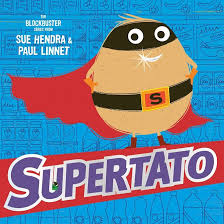
2. Various Non Fiction books around 'People who help us' alongside many special visitors.

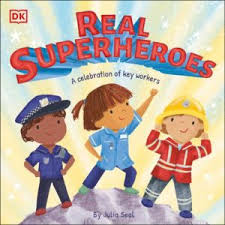
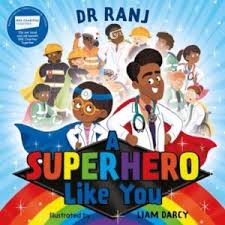
3. Handa's Surprise
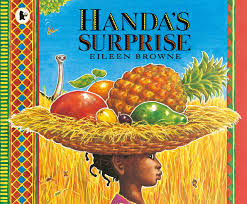

We look forward to many more Mystery Readers this term!
Please see Miss Crook if you would like to be our next Mystery Reader!

Writing in Foundation
Learning to write is a critical milestone for children, and it all begins with letter formation.
Whether it's jotting down a grocery list, filling in an application, or writing an exam paper, writing is an essential skill we use daily, throughout our lives.
For children, learning to write starts with letter formation.
As technology becomes increasingly prevalent in our lives, some might question the need to teach kids handwriting.
Writing by hand is an important part of a child’s academic development. Learning letter formation has been linked to the development of cognitive skills that lay the foundation for later academic success. The process of forming letters while handwriting also activates neural pathways that are associated with strong reading skills.
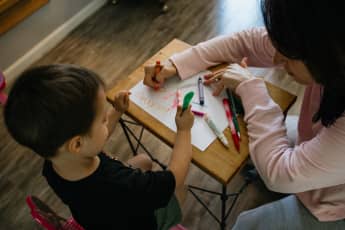
Learning how to correctly form the letters of the alphabet helps kids to master foundational skills including the development of fine motor skills and hand-eye coordination. By focusing on proper letter formation early on, children can develop confidence in their writing abilities and be better prepared for success in the classroom and beyond.
As parents, caregivers, and educators, we know that teaching letter formation can be challenging, but with the right strategies and resources, it can also be a fun and rewarding experience.
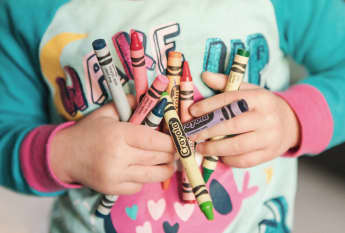
First things first
There are a few key skills which kids need to develop before embarking on their letter formation journey:
- Fine motor skills
- Hand-eye coordination
- Pencil grip
- Pencil control
Why are fine motor skills important?
Kids use fine motor skills in many everyday activities. Any activity which involves the minute movements of hand, wrist, and finger muscles, like holding, or gripping objects, makes use of fine motor skills. This includes tasks like holding a pencil, colouring in, or cutting with scissors.
Fine motor skills enable a person to use small objects with precision, while hand-eye coordination allows them to do so in a controlled and coordinated manner. Together, these skills are used to complete a wide range of everyday tasks, including writing, tying shoelaces, and using utensils.
Here are some tips for helping children develop their fine motor skills:
- Encourage lots of unstructured playtime with small toys and interactive games, such as blocks, puzzles, and play dough.
- Practice activities that require using the fingers and hands, such as threading beads, pouring liquids, and buttoning clothes.
- Encourage children to draw and colour, using various materials such as crayons, markers, and chalk.
- Allow children to practise cutting with scissors or even sorting small items like buttons or beads.
Why is the correct pencil grip important?
It’s important in developing fine motor skills. A proper grip also allows more control over the pencil, creating smoother and more precise movements. This allows kids to create shapes and letters more easily and accurately.
Without the correct grip, forming letters can be a challenging and frustrating experience.
The dynamic tripod grip
The dynamic tripod grip is still the favoured pencil grip method taught today because it allows the fingers more wiggle room, enabling the writer to create letters more seamlessly.
To make the dynamic tripod grip: place the pencil or crayon on the middle finger and control it with the thumb and index finger. The ring and little finger should be curled gently into the palm of the hand.
Some tips for helping kids achieve a good pencil grip:
- Encouraging them to hold the pencil with their thumb and index finger, with the middle finger supporting the pencil
- Encouraging kids to practise with different tools such as twigs on the ground, painting brushes, crayons, chalk…
- For stabilisation, kids can hold a cotton ball or play dough between the ring and little finger, while holding their writing utensil in the dynamic tripod grip.
- Tearing paper and squeezing playdough can help with grip development
- Take frequent breaks to prevent hand fatigue
- Avoid gripping the pencil too tightly – this may lead to hand fatigue and cramping.
- Practice makes perfect!
Tip: It's good to keep an eye on a child's pencil grip stages to work around their abilities and to spot any signs of difficulty they may have.
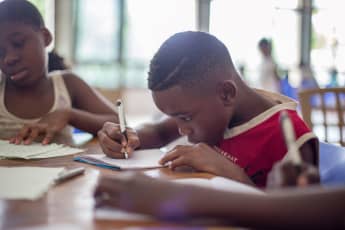
Pencil Control
Using the pencil to join dots, or using it to trace the lines on a piece of paper, with all the twists and curves to create the perfect shapes and letters are all examples of pencil control.
As children progress with their writing skills, they learn to make smaller and more accurate shapes with more confidence and ease.
Kids can improve their pencil control through various activities, such as dot-to-dot exercises and tracing.
Teaching letter formation
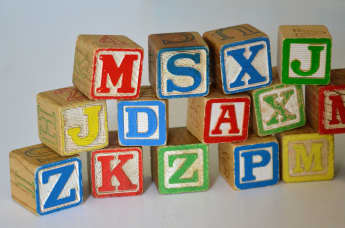
Okay, we're almost ready to begin teaching children letter formation.
The kids have been strengthening those fine motor skills and working on hand-eye coordination exercises (Tick both boxes), the pencil grip is solid and there is good control (Tick. Tick.).
1. Practising shapes and lines
Practising the curves, circles, and lines that help form shapes is also good preparation. By building a solid foundation with pre-writing shapes, children can approach letter formation with more confidence and ease.
2. Get familiar with letters

Understanding the world display lettering is a resource with colourful illustrations of lowercase and uppercase letters, numbers, and punctuation (including maths symbols). All of these individual characters can be cut out and used to spell out the names of classmates or lesson topics.
These gorgeous illustrations can also be cut out and used as posters or even as tracing sheets.
3. Letter families
Before learning letter formation, kids may benefit by learning about the different letter families. These are the different groups of letters that share common features - for example, diagonal letters like v,w, and x.
4. Demonstrating technique
Teachers or parents can show children how to properly form each letter by modelling the correct movements and strokes.
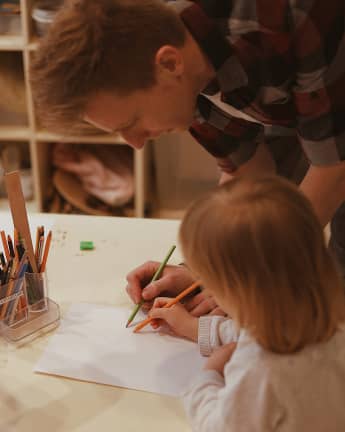
5. Tracing activities
Tracing activities can help children develop muscle memory and improve their hand-eye coordination, making it easier for them to form letters on their own.
6. Using a multi-sensory approach
Tactile materials, such as play dough, twigs as writing utensils, and even sand or clay, can help children learn letter formation by engaging different senses.
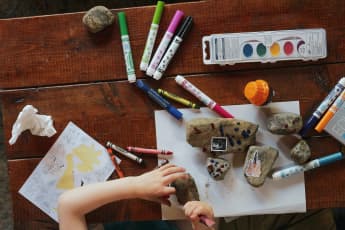
7. Dot-to-dot activities
Dot-to-dot activities can help children develop their fine motor skills, hand-eye coordination, and pencil control while also teaching letter formation in a fun and engaging way.
8. Practice makes perfect!
Like any skill, regular practice is important for developing strong letter formation abilities. Teachers and parents can provide opportunities for children to work on forming letters during classroom activities, homework, and even playtime.
9. Positive feedback and reinforcement
Praising children for their efforts and progress can help motivate them to continue practising and improving their letter formation skills.
Helping your Child with Early Writing
Writing is the most difficult of the basic skills, as it involves a wide range of concepts , skills and knowledge.
They have to know:
- That writing is talk written down.
- That writing goes from left to right.
- That letters stand for different sounds.
- There are capital and lowercase letters.
- There are different kinds of writing for different purposes.
It is important to:
- Let your child see you writing and let them join in.
- Watch and listen to find out what they already know.
- Pin his/her writing up, even if you think it looks like scribble. Don't put it in the bin! Celebrate all their writing, which will intitally start with making marks.
- Show him/her that you can make mistakes and correct or start again.
- Spelling is important, but initially it is more important to ensure children enjoy writing. Spelling will develop alongside phonic knowledge.
- Encourage your child to keep them going!
Emergent Writing Stages
It takes a long time to get from stage 1 to stage 8
.jpg?width=1920&height=1080&scale=LIMIT_MAXSIZE)
Writing for Real Purpose
Writing for real purpose is helpful for children. Ask your child to write the following for you:
- A shopping list
- A letter or envelope
- A birthday or celebration card
- A postcard
- A small book
- A label to go with a picture they have drawn
Moving in to Formal Writing
Once children know about letters, they are taught how to form them.
Children need lots of opportunity to develop physical control:
- Balancing, climbing, moving to movement and outdoor play.
- Manipulative skills, cutting, using tools, cooking - using utensils.
- Fine motor control and hand eye co-ordination - threading, jigsaws, small world equipment - train sets, dressing dolls.
There are three main movements to handwriting:
.jpg?width=1920&height=1080&scale=LIMIT_MAXSIZE)
Practise large scale by:
- Swing arms - one arm, other arm, both arms together.
- Sky writing.
- Using large equipment and paper.
Scale down by:
- Using chalk on an outdoor surface.
- In sand, rice, salt or couscous placed in a tray,
- In shaving foam on a table.
- Old paintbrushes and bucket of water to paint on an outside wall.
Even smaller scale:
- Felt tip pens.
- Crayons.
- Pencils.
- Different colour and sizes of paper.
Boys are attracted to paper in the shape of vehicles amd animals.
Children often want to write their name long before formal writing begins.
It is important to use the school handwriting style (see below)
It is important that children do not over learn incorrect movements,
All letters start on the line to aid joined handwiriting.
Joined up handwriting helps with spelling patterns.
Helping Children to Develop an Effective Pencil Grip
It is important that your child develops a correct pencil grip. Help them by:
- Correcting them should they hold their pencil incorrectly.
- Guide their hand to trace letter shapes (you can download the handwriting template below).
- Do not push children to write a length if they cannot manipulate the pencils correctly. This will be painful and can put them of writing.
- Encourage drawing and putting detail on to their drawing - this is one of the best things you can do to encourage your child with writing.
- Do not waste money buying handwriting books, as children enjoy colouring their own work and making patterns much more.
Moving to Key Stage 1
Once your child has mastered the basic skills of writing:
- Grapheme phoneme recognition.
- The difference between a letter, word and sentence.
- What a sentence is - the captial letters, finger spaces, full stops, neat handwriting and making sense (Magic 5).
The most important thing is to rehearse what they are going to write before they begin. This enables them to concentrate on the skills of writing not what they are writing.
.jpg?width=1920&height=1080&scale=LIMIT_MAXSIZE)
Parents Phonics information: https://www.ruthmiskin.com/parents/
Phonics games - www.phonicsplay.co.uk
Maths games - www.topmarks.co.uk
APP/Website to support Phonics in a video game - https://www.teachyourmonster.org/readingforfun
Look out for weekly QR codes and half-termly homework menus - these will be in your child's
A copy of the homework menu is below